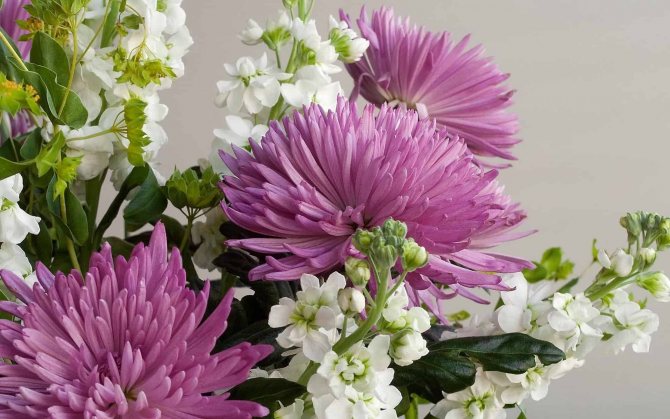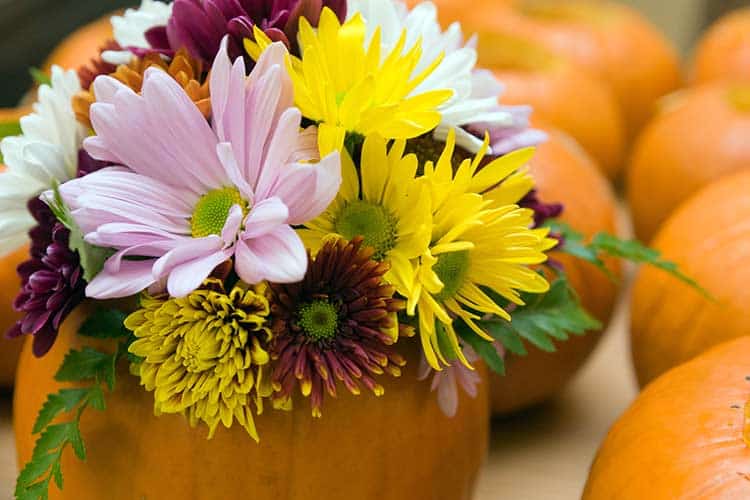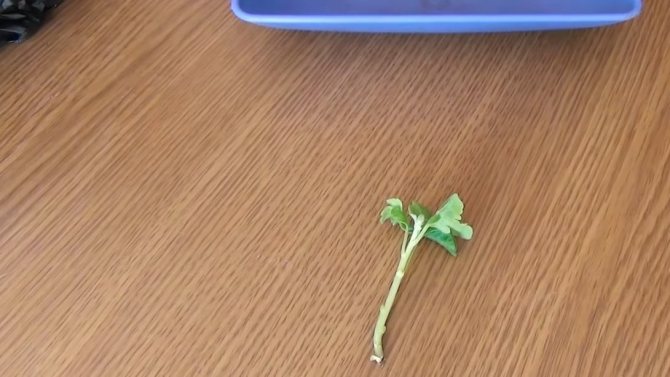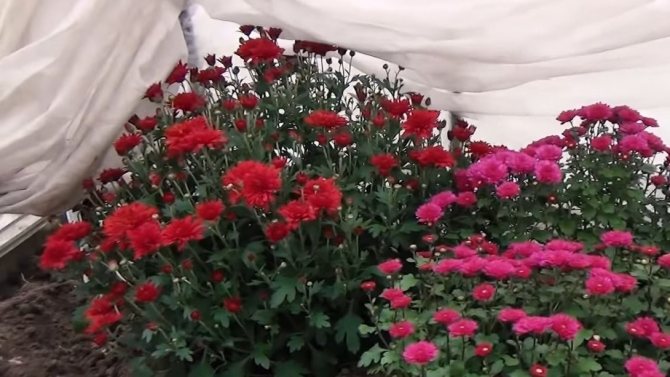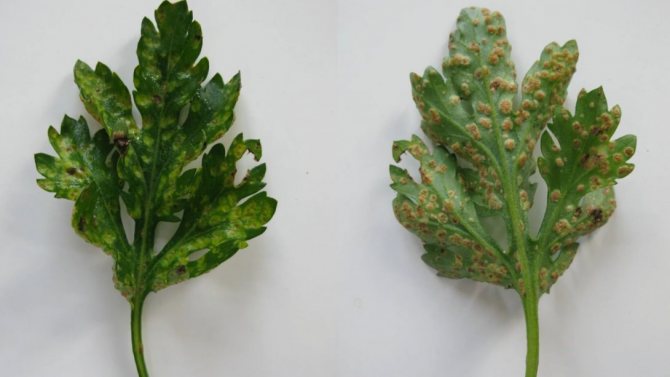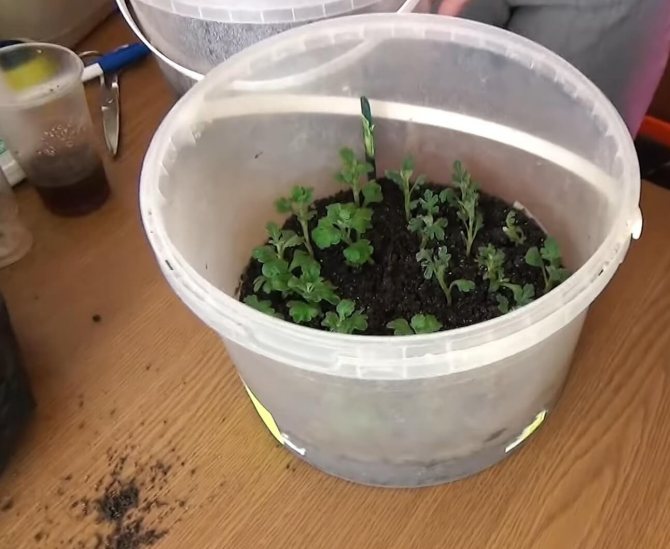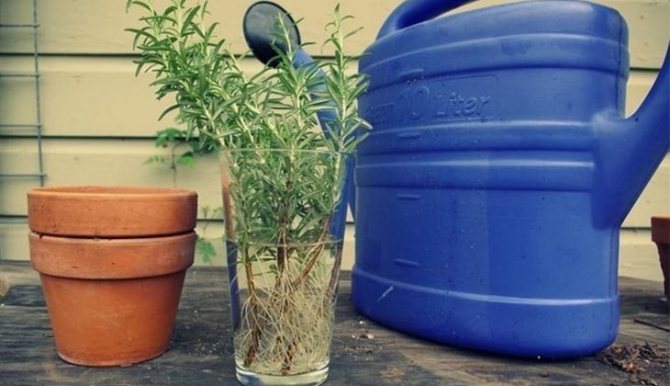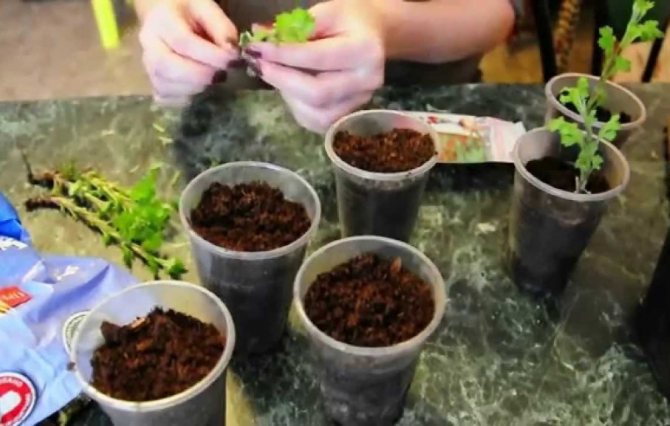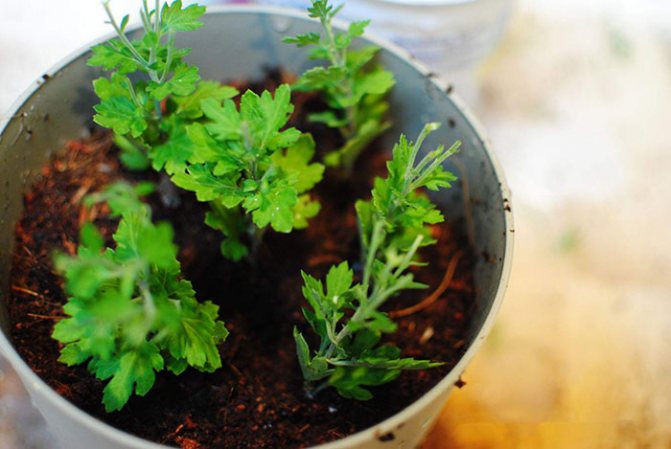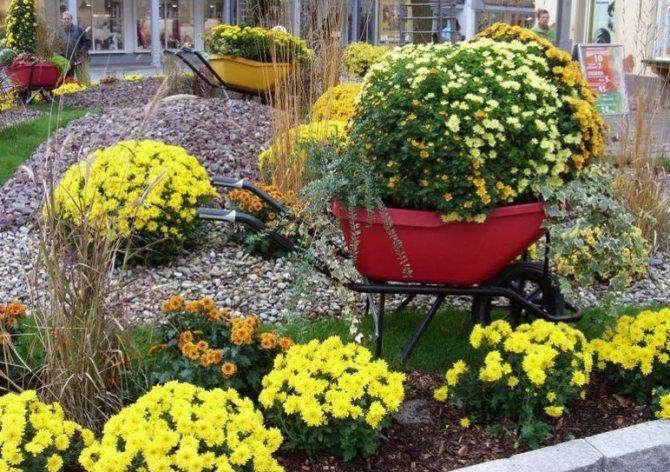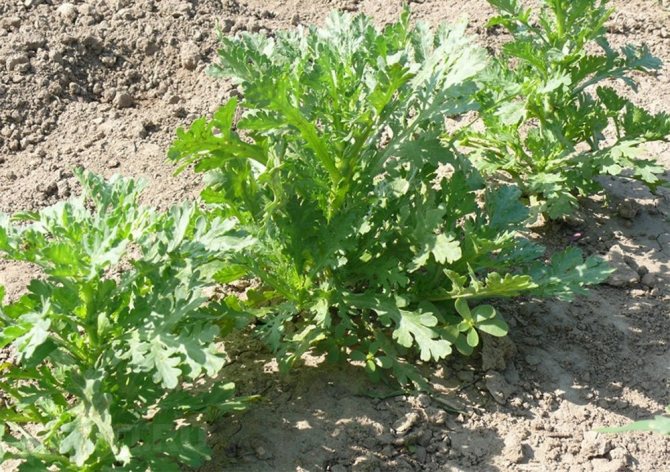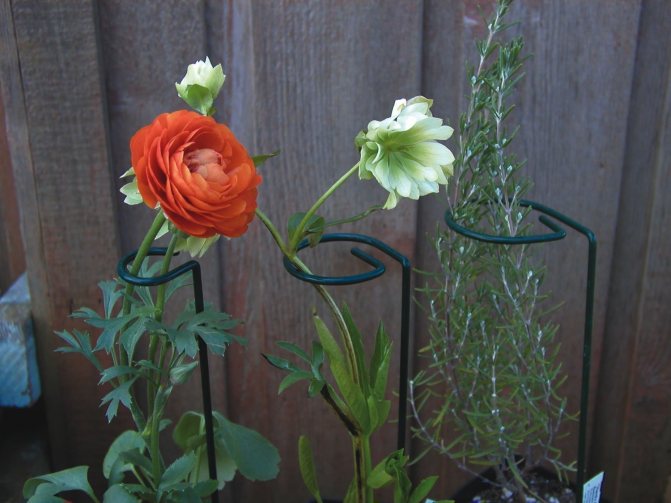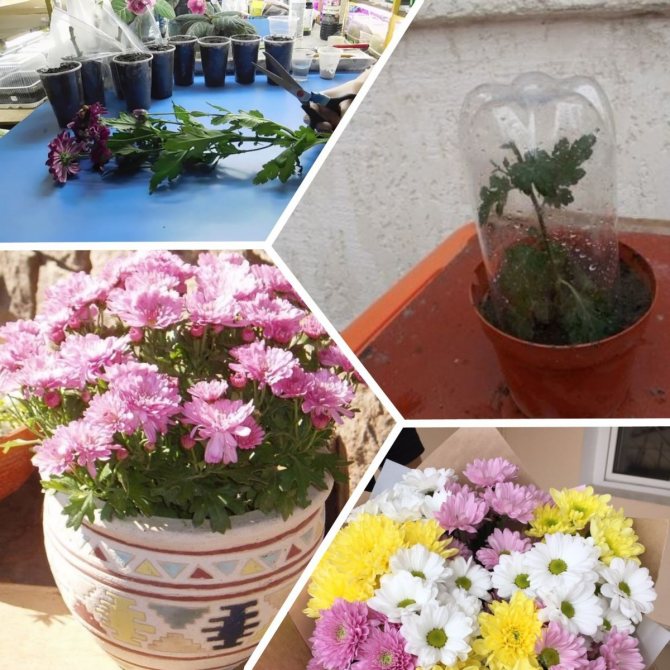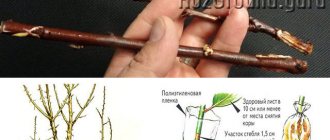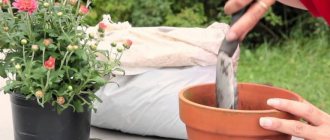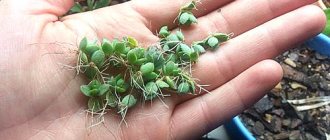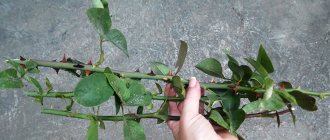Features of the procedure at different times
You can cut chrysanthemums in spring and autumn. The procedure allows you to preserve the varietal characteristics of the crop.
Spring-summer
For spring cuttings, in the spring, a mother bush is taken out of the basement, from which shoots begin to grow rapidly in the warmth. When they reach a length of 10-12 centimeters, they are cut for grafting. The breeding procedure can also be done in summer by cutting off cuttings and planting them in damp ground. With good care, the garden flower has time to bloom in the current fall.
Autumn
For autumn cuttings, chrysanthemum bushes are cut off, after 2 weeks they are brought into a warm room. When the quickly emerging shoots reach 8-10 centimeters, they are separated and planted separately. The peculiarity of autumn cuttings is that the seedlings must be separated from the mother plant by hand, and not cut with a knife.
Frequent mistakes
In the process of reproduction of chrysanthemums, flower growers, especially beginners, often make mistakes, as a result of which the process of obtaining new plants is unsuccessful. Therefore, experienced florists strongly recommend observing the following rules:
- Pruning of the mother bush should be done in December. If this is done sooner or later, the plant will not release young shoots at all.
- It is better to divide the mother bush at the end of February or at the beginning of March, since in winter the root shoots do not have the required length and their roots. The same terms should be observed during cuttings.
Rooting of bouquet shoots is often unsuccessful. This is due to several reasons:
- the stems are too weak or the shoots were taken from a sick plant;
- sudden temperature changes prevent rooting (the optimum temperature for cuttings is 23-25 ° C);
- if you use a root growth stimulator for rooting bouquet stems, it is important to observe the time of exposure in the solution - if you overexpose, the cuttings will not take root;
- after the appearance of the roots, the shoots must be planted immediately in the ground - a long stay of the roots in the water can lead to their rotting and ineffectual rooting in the ground;
- with this method of rooting, it is important to provide greenhouse conditions for plantings by covering them with a transparent jar, film or plastic bottle;
- do not moisten the soil too often, otherwise the cuttings will become moldy and die from being affected by a fungal infection;
- regular ventilation will prevent the appearance of mold on the surface of the soil;
- a soft or damaged stem is unlikely to grow a new plant, so it is important to check its condition before planting.
Chrysanthemums can be propagated in different ways and at different times of the year. For a successful process, it is important to observe planting dates, use a seasonally appropriate growing method and provide young bushes with proper conditions and care, especially during the rooting stage.
How to cut
The best bushes are used for propagation by cuttings. They must be strong, free from signs of diseases and pests.
Timing
In spring, chrysanthemums are cuttings, depending on the timing of ripening, from March to May. The earlier the variety, the earlier the procedure is started. You can also remove cuttings and plant them in the ground throughout the summer.In the fall, the mother bush is dug up just before the frosts.
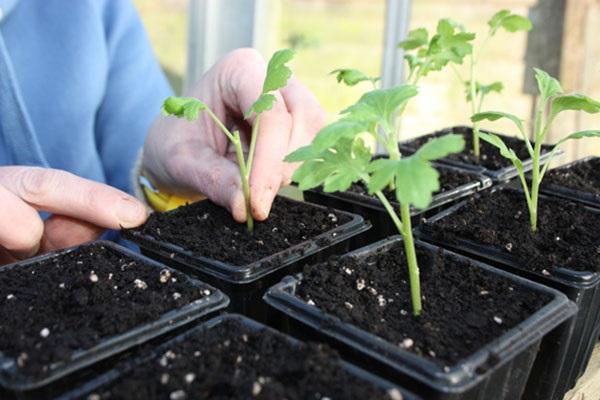
Cuttings in spring
For cuttings, strong, elastic shoots are chosen. Each cut cut should have 2-4 internodes. The lower part of the trunks is freed from the leaves. This is done so that the shoots do not rot during rooting. The remaining leaves are shortened by ⅓.
Harvesting mother liquors in the fall
In order for chrysanthemums to bloom profusely and effectively in the next season, you need to carefully choose mother plants. They must be well-rooted, healthy and strong. Bushes are dug up in the fall, before the onset of persistent frosts.
Storage of mother liquors in winter
Throughout the winter, you need to monitor the air temperature in the room. It should not rise above +4 ° С, otherwise shoots may appear prematurely. The humidity of the surrounding air is equally important. If the cellar is damp, the chrysanthemums do not need additional watering. The dried soil is slightly irrigated with water.
See also
Planting and caring for a cornfield in the open field, a description of the species and termsRead
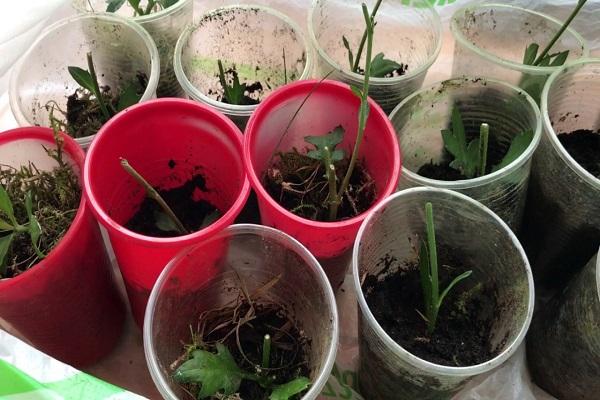

Planting and preparation of mother liquors
To prepare the uterine bush, the following procedures are carried out:
- at a height of 5 centimeters from the surface of the soil, the entire ground part of the bushes is cut off;
- chrysanthemums are dug up and placed in a bowl with a lump of earth;
- the root system is covered with sand.
The mother bush is placed in a cellar, where it will be stored until spring.
Summer cuttings of chrysanthemums
For summer cuttings, stems that have not yet had time to woody are chosen. The top is cut off with a height of 10-12 centimeters, which is planted in the shade. To prevent evaporation of moisture from the cutting, it can be covered with a glass jar. The seedlings are watered, and after 2-3 weeks, roots will begin to appear.
Important! A sharp, disinfected knife is used for grafting.


What flowers are suitable for rooting
Only domestic chrysanthemums lend themselves to propagation by cuttings from cut stems. Foreign specimens were treated with special chemical solutions that prevent wilting and, along the way, make it impossible to germinate roots.
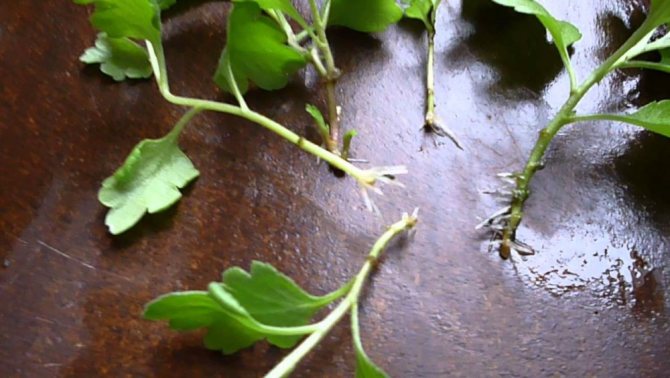

For grafting, only those chrysanthemums that were grown in local nurseries are suitable.
Unlike roses, which must be grafted immediately after receiving a bouquet as a gift, you can admire chrysanthemums for a while, and only then use them to prepare cuttings. Small-flowered Korean chrysanthemums root most easily. It takes a little more effort to germinate large-flowered Indian varieties.
Reproduction from a bouquet at home
The procedure is straightforward. Shoots that are in a humid environment for a long time, sooner or later, will take root. The main condition is that the water must be changed every day so that it does not acidify and, as a result, rotting of the shoot. For the same reason, it is necessary to remove all leaves in a humid environment.
How to prepare cuttings
Cuttings are cut with a sharp knife, but not at the very root, but leaving shoots 2-2.5 centimeters long on the mother plant. In the future, shoots will still grow from them, which can also be rooted. Weakened, thin cuttings are removed from the bush, since viable chrysanthemums will not grow from them. The lower part of the cut shoots is cleaned from the leaves.
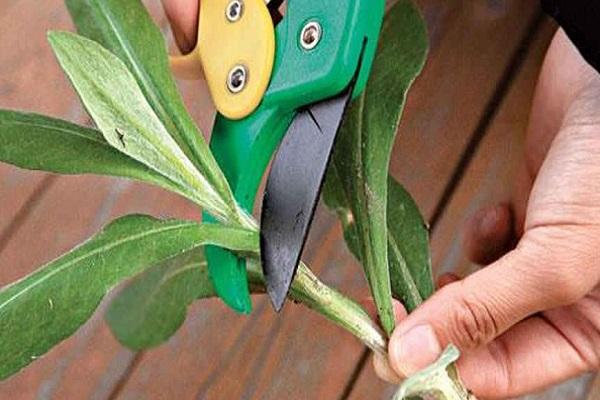

Planting the cuttings in the substrate
For growing the cuttings, a light, loose substrate is prepared, consisting of sod land, peat and sand. The landing procedure is as follows:
- drainage from expanded clay or small stones is laid at the bottom of the planting box;
- prepared soil is poured on top;
- cuttings are deepened by no more than 2.5-3 centimeters;
- a small layer of river sand is poured on top.
Cuttings are planted at a distance of 4-5 centimeters from one another. While developing, they should not touch the crowns.
Rules for selection and cuttings of the stem
Chrysanthemum rooting rarely causes problems, and the roots can give almost any kind of shoots. But do not try to germinate too young, not gaining strength and too old, lignified shoots. Young shoots rarely take root, and old ones begin to rot before they germinate.
For harvesting cuttings, you should choose a chrysanthemum from a bouquet with strong, semi-lignified, richly colored side shoots growing from the leaf axils. The most viable are the lateral processes located on the main stem up to the flowering shoots. But if signs of yellowing are already noticeable on the shoot, you should not root it.
Important. You should not choose too thick, coarse shoots and cuttings for rooting, on which internodes are too often located.
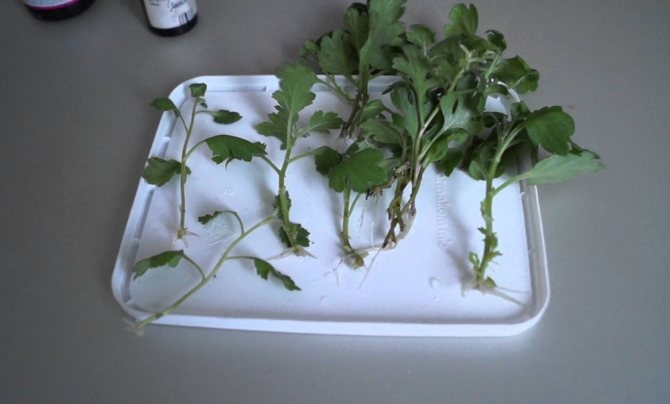

Only strong lateral shoots are suitable for cuttings.
Selected viable shoots are cut from the mother stem in such a way that a "heel" remains at the lower end, that is, a part of the base of the central stem. On blanks, all leaves are removed, except for 2-3 apical ones. The upper leaves must be cut off by a third of the length. This technique will limit the growth of leaves on the shoot and stimulate the formation of roots on it. To ensure future branching, the crown of the shoot must be pinched.
Care rules
Caring for chrysanthemums is to create high humidity for quick rooting of cuttings, watering, picking, feeding.
Temperature regime
A box with landings is placed in a room with a temperature of 15-18 ° C. In a warmer place, cuttings will root faster, but there is a greater chance that they will rot. The room should be well lit. With a lack of light, the plantings are illuminated artificially.
See also
Planting and caring for a brachicoma in the open field, growing from seedsRead
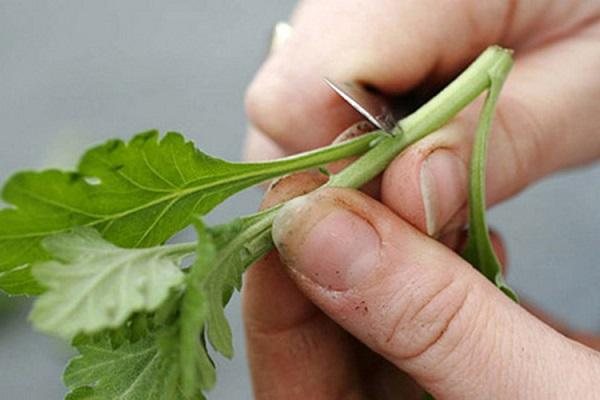

Humidity
Plantings require high humidity for rooting. To increase it, the box with cuttings is covered with foil. It should cover the seedlings in such a way that air does not penetrate to them from the sides. Remove the film after the formation of roots on the cuttings.
Moistening the substrate
When chrysanthemums are kept under the film, they do not need frequent watering. Care should be taken to keep the soil moist, but not wet. Excess moisture can provoke fungal diseases.
After rooting
When the cuttings begin to grow, it means that they have taken root, and their development has begun. So that they do not interfere with each other, a pick is made: a distance of 8 centimeters is left between the plants. Excess bushes can be rooted by planting them in separate containers. Further care consists in watering, feeding once a week with mineral fertilizers.
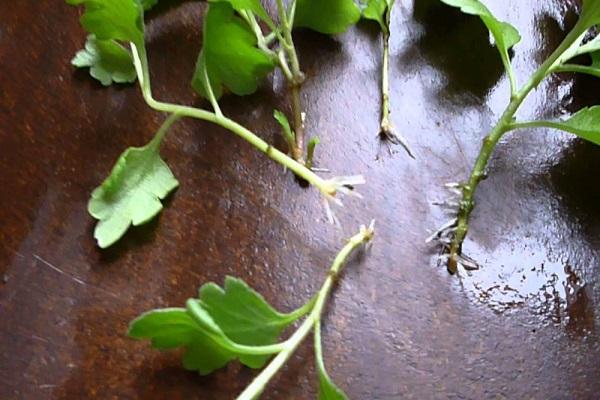

Seeds
Seeds collected from your own bush can be used to produce new plants. Reproduction of chrysanthemums by seeds is carried out from the beginning to the end of summer. This method is often used for annual garden varieties.
The seeding technique is as follows:
- dig holes at a distance of 35-40 cm;
- spill abundantly with warm water;
- two seeds are laid in each hole, buried with garden soil, lightly pressed, abundantly irrigated and covered with foil.
You can remove the shelter after the first shoots appear. A week later, young crops are fertilized with nitrogen preparations to stimulate the growth of the root system and the aerial part. When the sprouts reach 10 cm in height, they are thinned out, then pinched.
At the stage of appearance of 3-4 pairs of leaves, young bushes are transplanted to a flower bed.


For transplanting, take a larger pot in order not to damage the root system
Other breeding methods
Chrysanthemums reproduce in several ways. In addition to grafting, the method of cultivation by layering is used, as well as dividing the bush.Another method is seed, which is most often used not by gardeners, but by breeders.
Dividing the bush
Chrysanthemum multiplies easily by dividing the bush. For this, 3-year-old plants are chosen. The procedure is performed as follows:
- bushes are dug out together with a clod of earth;
- long shoots are shortened;
- with a sharp knife, the bushes are neatly divided into several parts;
- delenki are planted in pre-prepared holes.
The best time for breeding is mid-spring.
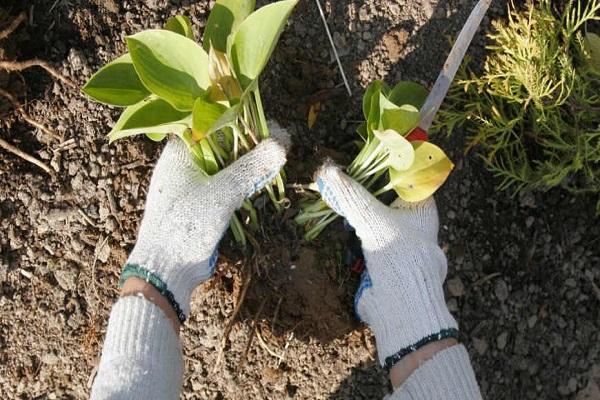

Layers
This method is easy to propagate tall chrysanthemums. When the shoots stretch well upward, they can be bent to the ground, pinned in the middle. The place of contact with the ground is earthed up, watered with water. For the winter, the shoots are covered with spruce branches. In the spring, cuttings with their own roots and shoots are dug up, transplanted to a permanent place.
Seeds
This method can be used to breed chrysanthemums, both initially at home, and immediately by sowing seeds in open ground. In both cases, the crops are covered with a foil so that in a humid environment they take root faster. When the 3rd and 4th leaves appear on the seedlings, they are thinned out. Young plants are fed several times per season.
Note! Home-grown chrysanthemum cuttings are hardened before planting in open ground.
Testimonials
I have never used rooting stimulants for cuttings, the roots grow back anyway, even in capricious varieties of chrysanthemums. I take water that is settled or thawed, sometimes rainwater. She cut old, degenerating bushes, the offspring repeated varietal characteristics, it turns out that even a lost flower can be saved in this way. Familiar from the northern regions (where winters are usually snowless, chrysanthemums freeze out) save flowers by harvesting a mother bush with subsequent cuttings.
When I propagated a spherical chrysanthemum, after rooting and transplanting into a container, buds formed on the cuttings, about a month remained before planting in a permanent place. I thought for a long time what to do with them further, in the end I transferred some of the bushes to the greenhouse, left the rest at home and cut off the inflorescences. Those that were in the apartment became lush and large, and the flowering ones noticeably weakened, but after disembarking in open ground they quickly caught up with other bushes.
Reproduction of chrysanthemum by cuttings in the fall will not take a lot of effort, even a novice florist can handle this breeding method. Carefully study our recommendations and feel free to get down to business. If you correctly organize a flower bed with different varieties of chrysanthemums, you can create an islet that blooms magnificently from spring to late autumn, until the ground is seized by severe frosts. How can you deny yourself such a pleasure!
Chrysanthemums must be loved. They are gentle, beautiful, fluffy. At the same time, they bloom when there is practically nothing green and living in nature. For this, these flowers are appreciated. Planting them is very easy. This can be done even using cuttings from a bouquet. Thus, spherical chrysanthemums are often rooted, they are propagated by cuttings in order to preserve the characteristics of varietality. If you didn't know about this, read our article and try yourself as a florist. Here we will write about how to breed chrysanthemums at home.




